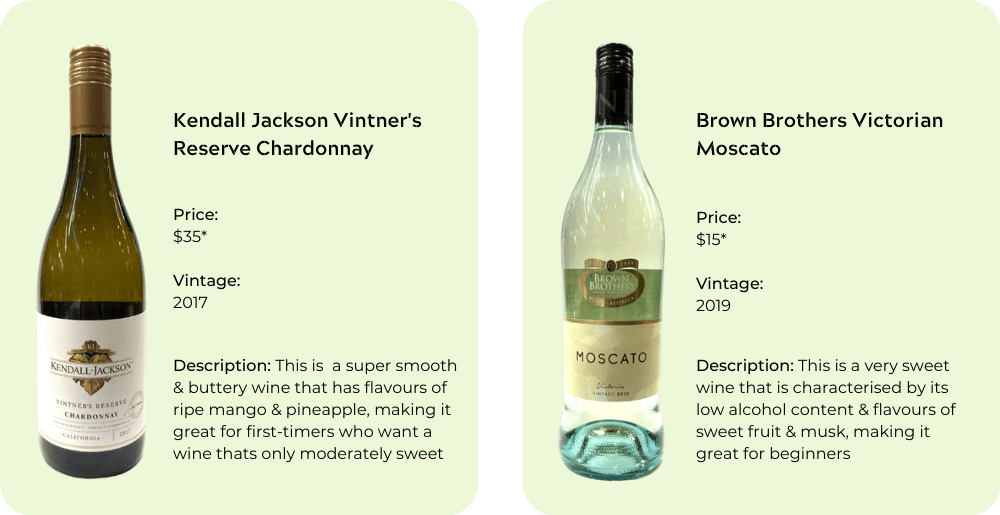For those who are cautiously optimistic about beginning their journey into drinking and appreciating wine, it can be an incredibly daunting experience to actually jump in and start.
Whilst most people will have their first sip of wine at a relatively young age, it isn’t really until they’re much older that they actually begin to experiment and properly learn all about it.
We think this is a massive shame, especially considering the fact that there are thousands of different grape varieties and wine styles available, which makes it impossible not to find a bottle to suit your tastes no matter how experienced you are.
Bearing this in mind, we’ve put together this quick first steps guide on how to begin your wine tasting journey and offer up not only some helpful tips and tricks to take with you as you start but also some individual product recommendations to help you choose when browsing online or in-store.
Red, Fortified & Dessert, Sparkling, Rosé, or White Wine?

Before we delve into the steps that are involved in actually tasting a bottle of wine, let’s first begin with the styles or types of wine that are most appropriate for a beginner to start with.
When examining this question, it’s important to understand that most people should begin with wines that are slightly on the sweeter end of the spectrum and completely without tannins.
This automatically excludes red wines and some styles of fortified wine as they often have at least some small levels of tannin within them, which are responsible for imparting a dry and sometimes bitter taste in the mouth that is often very off-putting for beginners.
Because of this, we usually recommend that people start their journey with examples of sweet white or dessert wine, such as Moscato, Oaked Chardonnay, or Botrytis Wine, as these are all sweeter and easier to drink.
If you’re adamant that you want to begin with red wines, however, or you’ve already begun with whites and are now looking to transfer into reds, there are a couple of different options available to you.
These include to begin with a Pinot Noir, particularly one from Australia or Chile, or a Gamay, particularly any bottle of this style from the Beaujolais region in France, as these are all known for possessing significantly lower amounts of tannin compared to other popular grape varietals, such as Shiraz or Cabernet Sauvignon.
Having sorted out on which types and styles to begin with, let’s move onto how to actually taste the liquid in your glass.
The Steps To Take When Drinking Wine

Drinking wine is easy. Actually appreciating and understanding all of the flavours and sensations felt when consuming your glass and providing an impartial and unbiased opinion, however, is incredibly difficult.
Whilst you might not be interested in learning how a professional sommelier tastes and assesses a particular glass of wine, it is vital that you at least get a grip on the basic steps involved in properly drinking one.
Step One: Consider how the wine looks in your glass, including its colour and opacity. A wine that is lighter in colour and easier to see through is likely going to be softer in its mouthfeel than one that is incredibly dark or difficult to see through.
Step Two: Raise the glass to around your chest height and begin to sense how strong any of the aromas present are, slowly moving it closer to your chin and then up to your nose. If you can already begin to smell the wine when it is down near your chin then it is considered to have a strong aroma whilst those that can only be smelt when they are right under your nose have a soft or light aroma.
Step Three: Take a sip and let the liquid swirl in your mouth for a moderate amount of time before gently swallowing. Consider how dry or sweet the wine tastes, what kinds of flavours are present, how much acidity there is, as well as how heavy or light it feels when it is in your mouth.
These three steps sum up in the simplest possible way how you should go about actually drinking a glass of wine, which aren’t that different from how the experts themselves are taught.
Like almost everything in life, your ability to be able to properly assess and taste a wine will grow as you begin to drink more of it over time and you become better able to notice how different grape varietals tend to taste and the kinds of flavours you typically find amongst the various types and styles of wine that exist.
For those who want to learn more about the flavour profiles of wine be sure to consider our guide to The Flavour Profiles of Wine, which illustrates, with the aid of graphics, how wines are separated based upon their common attributes.
Recommended Bottles: White Wine
Moving past how to drink wine, here’s some of the bottles of white wine that we found easy to drink when we began our wine tasting journey.

Recommended Bottles: Red Wine
For those who are sure that they want to start with bottles of red wine or have already had plenty of white wine and want to move onto reds, here’s some of the specific bottle recommendations that we found helped us when we began our journey.
